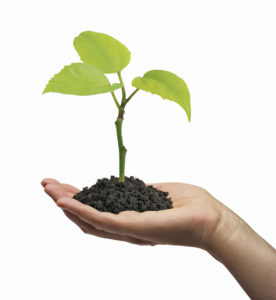by Allison Robins
contributing writer
 With the increasing trend of growing your own food, there have never been so many resources for making the most of your time and money. But space is also a major consideration for many living in German apartments with only a porch or terrace. The good news is that you don’t need an American-sized backyard to grow your own food; all you need is a little planning.
With the increasing trend of growing your own food, there have never been so many resources for making the most of your time and money. But space is also a major consideration for many living in German apartments with only a porch or terrace. The good news is that you don’t need an American-sized backyard to grow your own food; all you need is a little planning.
The most important consideration is what to plant. With a limited amount of space, it’s important to determine your reason for growing your own food. If your aim is to save money, remember you’ll save much more if you plant a more expensive and perishable herb (like cilantro) than if you plant an inexpensive vegetable (like potatoes). If you’re trying to go organic, consider which fruits and vegetables are most affected by pesticides (permeable surfaces like lettuce and herbs).
Regardless of your goal, even if your primary motivation is just the excitement that comes from eating food you nurtured yourself, it’s essential to consider what types of fruits and vegetables grow well in your climate. In the somewhat temperate-humid climate of Rhineland-Pfalz, most vegetables will grow fairly well, though with a short growing season: carrots, onions, hardy varieties of tomatoes, zucchini, pumpkins, peas, potatoes, garlic and more.
In your small space, decide in advance how much square footage can be devoted to plants. For beginners, it’s usually better to start out small, selecting a few varieties that are easy to grow. Seed and seedling packaging, as well as Internet resources, indicate the separation distance needed between each plant, which will also help you determine how much produce your space will yield. Also, recognize sunny and shady zones; tomatoes and peppers need lots of sun, while salad greens and broccoli can grow well with just three to six hours of sun per day.
Although you can begin planting seeds indoors as early as February in the Pfalz, late starters can purchase seedlings (small plants), which can usually be planted outdoors immediately after last frost (likely April in the Kaiserslautern area), depending on the product. Be sure to check seed packages for recommended planting time.
Pay attention to your plants. Water is absolutely essential, and some vegetables and herbs need to be checked daily for dryness. A good rule of thumb is if topsoil is dry more than one inch deep, the plant most likely needs water. Drainage is vital to plant health; always buy pots with holes in the bottom. Pruning is also a necessary part of growth and disease control. Tomato and other plants produce shooters that should be controlled to maximize efficient plant growth, and diseased sections in any plant should be removed before it spreads to the rest of the plant.
To maximize vertical growth (great for small spaces) and avoid stem breakage, be sure to incorporate adequate support when planting seedlings. Use stakes, trellises, sticks, twist ties — anything to keep the plant from collapsing under a bountiful harvest. Vertical bean trellises are a great way to maximize small spaces. Depending on the quality of your soil, you may need to fertilize regularly to give plants necessary nutrients. Organic fertilizers are easy to find, not too expensive and quite effective (“Bio Dünger” in German stores). An advantage to terrace and apartment gardening is fewer herbivores looking for a free meal, but pest control (organic or conventional) may still be necessary; many recipes are available online for homemade organic pesticides.
With the right planning and attention, you can maximize your small space and enjoy growing your own food.


